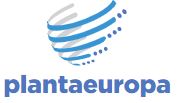Reconstruction of complete chromosomes from plant genomes by sequencing
A Genoscope team has managed to reconstruct complete chromosomes from plants by combining long fragment sequencing and optical DNA mapping technologies. Their approach opens new perspectives in solving the complexity of larger plant genomes.
Posted on December 4, 2018
The majority of sequencing data is currently generated using the technology marketed by Illumina. This technology, called short reading, low-cost sequence of complex genomes, like those of plants. However, being able to read only small fragments of DNA (100-300 base pairs), it makes it difficult to reconstruct genomes containing many repeats. Recently, technologies that can read long DNA fragments are available, facilitating the reconstruction of highly repeated genomes. However, based on these long readings, the reconstruction of complete chromosomes is still not possible.
Genoscope researchers used new genomic techniques to reconstruct the genome of an oilseed shuttle ( Brassica rapa ), broccoli cabbage ( Brassica oleracea ) and banana ( Musa schizocarpa ), three plant species including the genome is highly repeated. The species of the genus Brassica thus exhibit great intra-species morphological variability. For example, broccoli, cauliflower, headed cabbage, kohlrabi or even Brussels sprouts all belong to the species Brassica oleracea. As for banana trees, those currently cultivated come from the crossing of ancestral species, whose knowledge of the genome becomes essential to characterize modern species. With the reconstruction of the complete chromosome of the genome of these three species, the researchers’ objective is to provide the essential tool to try to understand the morphological differences and the evolutionary history of each variety.
Readings on a chromosomal scale for these three species. To do this, the researchers first extracted large DNA fragments which they sequenced using the technology marketed by Oxford Nanopore Technology (ONT). This technology can read large molecules (> 50Kb), but the assembly of these readings does not allow the chromosomes to be reconstituted. For this, they combined this data with optical cards produced by the Saphyr system (sold by the company Bionano Genomics). Indeed, if these maps do not give information on the sequences, they make it possible to know the organization of a genome on the scale of the chromosome. These three genomes, shared with the scientific community, are among the most contiguous currently available (see figure below). The combination of these different technologies opens up new perspectives in solving the complexity of larger plant genomes.
The abscissa axis represents the “Contig N50” which is a measure allowing to check the contiguity of the reconstructed sequences.
The ordinate axis represents the estimated size of the genomes.
The color of the dots depends on the sequencing technique used.
The three arrow genomes are those provided by this study.
